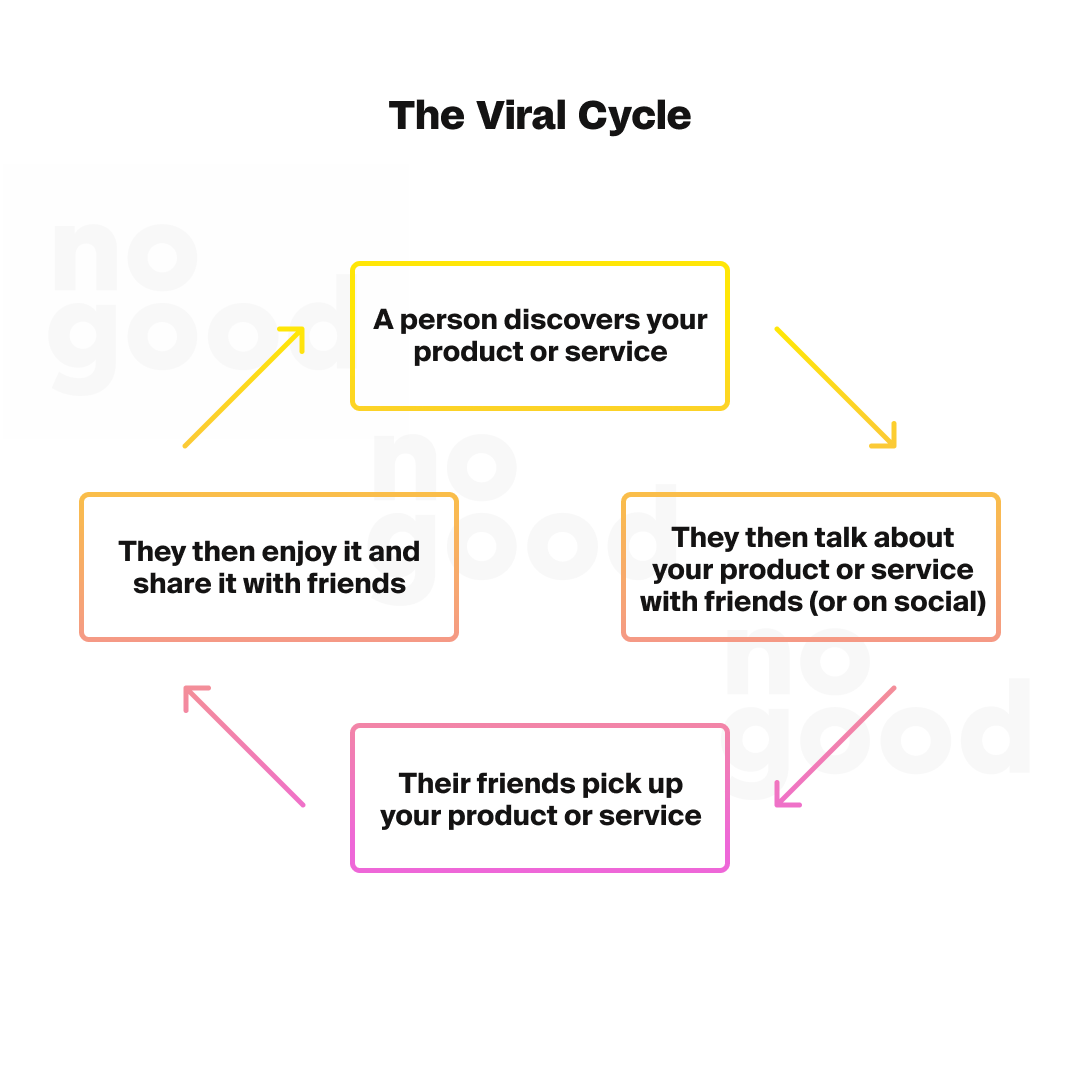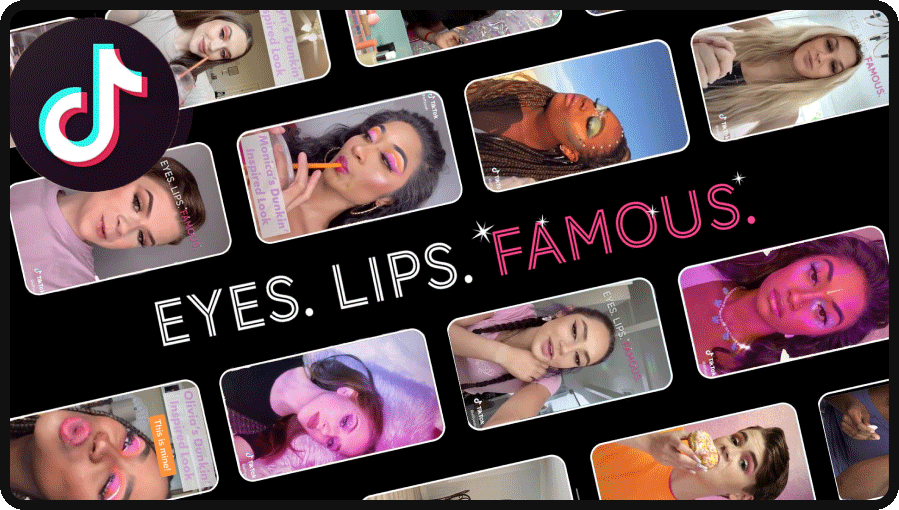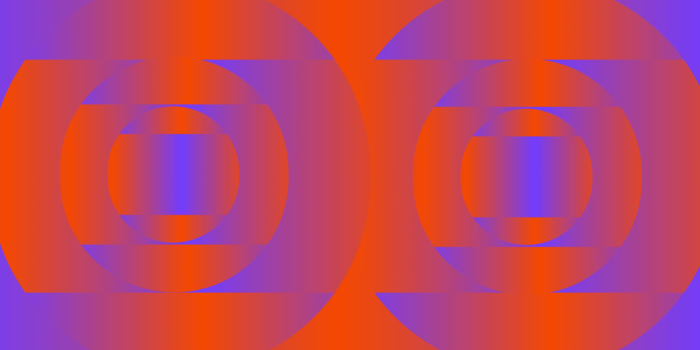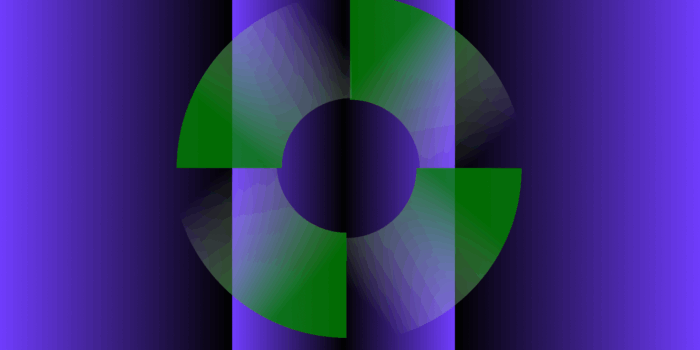Going viral is not luck. There are plenty of people who have a viral video or put out a product that goes viral that didn’t mean to, but that does not mean it was by luck. Each of these instances can be reverse engineered to identify the steps that were taken to make that possible.
Let’s take e.l.f cosmetics for example. E.l.f. Cosmetics sales had plateaued in 2019, and in 2020 they launched a growth strategy to reach the new age of consumers – Gen Z. With more and more beauty brands coming out each year, they had to completely rethink how they were going to turn their small, budget-friendly brand into an international staple for young consumers. As explained in their Shorty Awards Entry, “From Q4 2019 through Q4 2020, e.l.f. established itself as one of the most innovative brands on TikTok, accruing over 10 billion views across a series of disruptive campaigns.”
But do views on TikTok translate to sales? We’ll break down how e.l.f. did it later in this post, but the cosmetics company increased sales YOY by 13% in 2020. Then in May 2021, they increased net sales by 24% to $92.7 million in just that quarter. It’s safe to say their strategy worked.
In this post we’re going to take a look at:
- What virality is
- How to cause virality
- The virality coefficient
- A deep dive into e.l.f. Cosmetics virality strategy and how to duplicate it
- What is virality
Virality is simply a very efficient and very successful growth loop. By creating viral content and putting a structure in place both internally and in external marketing to encourage virality, it is possible to create a constant loop where:
- A person discovers your product or service
- They then talk about your product or service with friends (or on social)
- Their friends pick up your product or service
- They then enjoy it and share it with friends

And the cycle goes on and on. It is a snowball effect that gets bigger and bigger, but your product, user experience, and internal structure has to be set to allow for this loop to circle.
2. How to Go Viral
As we have said, going viral does not happen by simply “getting lucky”. Virality comes from the right conditions at the right time. The factors needed for something to go viral are as follows….
It needs to be…
Relevant: This typically refers to cultural relevance. For something to go viral it has to fill a gap and provide value. This may be being relevant to a trend at that moment, or filling a widely known problem.
Infectious: The very nature of virality is being easily shareable. Like the common cold, it must be something easily passed from person to person, and in this case typically over the internet. This means it should be easy to explain and easy to obtain.
Timely: There is such a thing as right product, wrong time. Marketers can ensure timeliness by having an understanding of the marketing landscape of their industry and the culture of their consumers. It is very easy for brands to fly above the clouds rather than sitting with their consumers, continuously listening and building that friendship.
These elements should be considered in every step of the campaign: from the product, to the marketing strategy, to the user experience. The goal is to create a growth acquisition loop that feeds into itself, creating that viral snowball effect that drives brand loyalty, revenue generation, and customer growth.
Math geeks, are you ready? Virality is not objective – there is a way to calculate the success of a viral marketing campaign.
Calculating the Virality Coefficient
We wouldn’t be growth marketers if we didn’t have data to back up our efforts! The virality coefficient is how we calculate the exponential growth of new customers from the current customer pool. Essentially, how many new customers are we getting from the current customers who are raving about our products.
Time for math class.

The variables we are working with are:
- Number of current customers
- Number of referrals those customers are giving on average
- The conversion rate of those referrals
So the question is: Of the customers we have, how many people are they referring us to and how many of those people are converting to customers (completing the cycle)?
Therefore the formula(s) for virality coefficient is…
(Number of current customers) X (number of referrals) X (conversion rate) = Number of new customers
THEN
(Number of new customers)/(Number of current customers) = Virality Coefficient
Brief example:
Say our pool of current customers is 10. Each customer is making 2 referrals on average, and the rate of conversion is about 40%.
(100 current customers) X (5 referrals) X (40% conversion rate) = 200 new customers
(200 new customers)/(100 current customers) = 2 Virality Coefficient
Meaning for every new customer you acquire, you can expect 2 new customers to join/buy.
One brand who did this very well was e.l.f. Cosmetics.
How e.l.f. Cosmetics Capitalized Virality

The pandemic caused a significant hit to beauty brands, with makeup sales declining 22%. E.l.f. Cosmetics sales had plateaued in 2019, so they decided to launch a campaign to bring their brand back into the spotlight and pull themselves out of the sales slump – all aimed at the new consumers.
Gen Z was their gateway to reaching the top of the beauty market, and they used TikTok as their mode to reach them. From Q4 2019 to Q4 2020 they accrued over 10 million views on the platform, and they have now grown that audience to over 616K followers.
How did they do this?
When they were evaluating TikTok as a platform they established several things…
- TikTok was not only a key platform for reaching their target audience, but it was a nonnegotiable platform
- Brands were just starting to come on to TikTok and really utilize it in their strategy, so they had the opportunity to be a big fish in a (relatively) small pond
- e.l.f. already had a presence on the platform from User Generated Content, which gave them a model for success AND proof that TikTok was a valuable platform to be on for their brand
The goal of their campaigns on TikTok were not only to establish brand awareness and grow their presence, but to become a leader and trend setter on the platform.
So the question stands… Can a brand successfully start a trend? E.l.f. Cosmetics said: “watch me.”
First item of business: Do what no brand has ever done before. Recognizing the importance of music on TikTok, they created their own song for a TikTok challenge. This song was relevant, fit into the platform extremely well, and as a result now has over 1.4 MILLION videos using it.

This along with their own organic content created a snowball effect of users creating videos on their behalf, so e.l.f. took it one step further. They created a TikTok reality show Eyes.Lips. Famous. where they had users create videos on why they wanted to win, and the brand had three beauty influencers judge the videos. Three winners were then selected to join the judges in a “Beauty Camp” which the brand aired daily on their TikTok for a month. With this campaign they not only managed to create a movement under the #Eyes.Lips.Famous., generating over 42 Million views under the hashtag, but they created a challenge that then fueled content for their own channel for a month.
However, the strategy doesn’t stop there. Part of building virality into your business is lowering the barrier to entry for your customers to purchase your product. E.l.f created a Chat with a Beauty Advisor feature on their website that makes it extremely easy for their consumers to get the help they need while they shop digitally. They even have an entire section of their website called E.L.F. Discovery where they have tutorials, guides, and resources that their consumers can take advantage of.
The results of all of this effort? As of Oct. 2022, e.l.f. Cosmetics dominates as the number 1 beauty brand for average and upper income female consumers according to the Piper Sandler Semi-Annual Gen Z Survey.
In an interview with Retail Touchpoints back in 2021 (at the beginning of their initiative), VP of Brand Gayitri Budhraja stated “Our success continues to be built off data, insight and genuine relationships with our passionate consumers — listening, responding to their needs and inviting them to be part of our brand narrative.”
Virality is certainly not built on luck, and it comes from a deep understanding of your consumer and having the desire to create something worth sharing.





